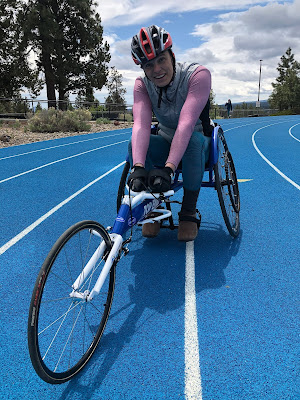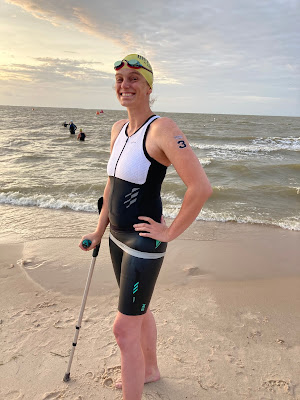Christmastime Inspires the Gift of Giving!
MOM
Sunday, December 12, 2021
The Time Of Giving!
Thursday, November 11, 2021
Happy Veteran's Day
Saturday, November 6, 2021
AIRBUS A330: Understanding the Technology
- Dial in the FAF altitude on the FCU, and pull for Open Descent. The thrust goes to idle, and the plane starts down.
- Select speed and dial in 170 knots. This is a speed that we can configure to flaps 3.
- While selecting the speed, call "gear down" and pull for full speedbrakes. Both of which create drag.
- Select flaps on schedule as you slow: 240 flaps 1, 196 flaps 2, 170 flaps 3.
- When stable and on profile, press for managed speed and call "flaps full landing check."
Thursday, October 7, 2021
Training the Emerging Pilot Workforce:
Influence Curriculum Development?
INVITE:
Calling All Pilots (and Non-Pilots)
I am a graduate student in the Department of Aviation at Auburn University, and I invite you to participate in my research study entitled Training the Emerging Pilot Workforce: Does Generation and Gender Influence Curriculum Development? where I seek to answer the following three questions:
1. Do non-pilots and pilots have different learning styles or preferences?
2. Do pilots in the Baby Boomer, Generation X, Generation Y (Millennials), and Generation Z generations have learning styles or preferences that differ from each other?
3. Do male pilots and female pilots have different learning styles or preferences?
You may participate if you are 18 years or older. I am asking that you take 5-10 minutes of your time to complete an anonymous, on-line survey that asks you to provide basic demographic information and then answer 44 questions that only have 2 possible answers each. These questions are from the Felder and Solomon Index of Learning Styles questionnaire. If you are interested and eligible to participate, click the link below to begin the survey. If you would like to know more information, or have any questions about this study, you can send an email to Kurt Reesman at klr0051@auburn.edu
Thank You
Kurt Reesman
Ph.D. Candidate
Auburn University
XOX Karlene
Sunday, October 3, 2021
Become Unconsciously Competent
Automaticity and adaptive expertise are essential for airline pilots to improve Situational Awareness (SA). Without automaticity and adaptive expertise, decision-making ability is limited, reducing the pilot's ability to deal with the unexpected.
What is Automaticity and Adaptive Expertise?
Rote memorization does not guarantee the pilot understands the automatic response. Knowledge-based automaticity and adaptive expertise, however, imply a deeper level of understanding than simply memorizing. Adaptive expertise requires precise knowledge, in both quality and content, to be structurally organized in the memory, as well as required for metacognitive skills necessary for planning, monitoring, and memory.
Becoming unconsciously competent is where knowledge is at the highest level of understanding. Automaticity and adaptive expertise further differ from rote memorization because rote memorization is associated with routine experience, whereas automaticity and adaptive expertise improve performance during novel situations. Rote memorization could result in limited understanding of memorized procedures that may not transfer to the aircraft or emergencies beyond events practiced and anticipated in the simulator.
Time And Place For Rote Memorization:
With all this said, there is a time and a place for rote memorization. Practicing flows for example. I am an advocate of memorizing the procedures we call flows, or the processes, to configure the plane for flight during the many phases---preflight, before start, taxi, before takeoff, taxi, shutdown.... While we memorize where to go, understanding what we are doing while there makes the difference.
This week I have memorized my flows and procedures, but I'm working to that higher level of understanding to achieve automaticity and adaptive expertise in order to become unconsciously competent. The best thing about this goal is that everyone can work toward it as it's a moving target because in aviation, it's not possible to know everything. Just when you think you're there, you get to learn something new.
Enjoy the Journey!
Saturday, October 2, 2021
Progress:
Enjoy the Journey!
Thursday, September 30, 2021
31 Ways to Position Your Bones
While in Training...
Last year on Halloween I posted a series of photos that my sister had taken daily. "Where is the skeleton today". I had planned on doing the same thing this year at my house. However, early this morning I will be headed to Atlanta to begin training (Florida in a couple weeks) and then back to Atlanta to finish, with my checkride scheduled on Halloween night. I will be living out of a hotel and on a plane for the entire month of October, with only a few nights in my own bed.
Friday, September 24, 2021
If I Can't Walk I'll Fly
CAF Giving Wings to Challenged Athletes

When I found myself as a wheelie, a local paratriathlete told me about CAF. A few meetings later and CAF had granted me funds to purchase my own hand cycle and had a racing wheelchair on the way to me.
It is because of CAF I got to compete in my rookie season of the paratriathlon in 2021. I’ll be there racing in October in full support of CAF and their programs.
What I ask of you today...Please join me in helping Kayla to change the world. and inspire those who have had their lives altered. They are living their life to the fullest, despite daily pain and limitations. I'm asking for you to please donate to CAF, via Kayla's fundraiser, where all proceeds go directly to CAF.
CLICK HERE TO IMPROVE A LIFE TODAY
Thank you!
XOX Karlene

Wednesday, September 22, 2021
How To Get out of Trouble
When you Inadvertently Wipe out Everything...
Wiping out all the waypoints is not unknown to any Airbus pilot. Either you have been there done that, or you will. Below is a little tip to get out of trouble.
Monday, September 20, 2021
A330: Clearing the PPOS

- Understand your airplane’s navigation system.
- Maintain heads up at a critical phase of flight. Not heads down programing the MCDU.
- Button pushing needs to happen at a safe altitude.
- MCDU selections must be confirmed by the other pilot.
- If it's not broken, don’t fix it.
- If a stabilized approach can’t be continued to a safe landing: Go Around.
Thursday, September 16, 2021
What Can Go Wrong? Go Wrong? Go Wrong...?

Monday, September 13, 2021
A330 Training Underway

Saturday, September 11, 2021
Remembering 911
911: The Day Aviation Changed







































